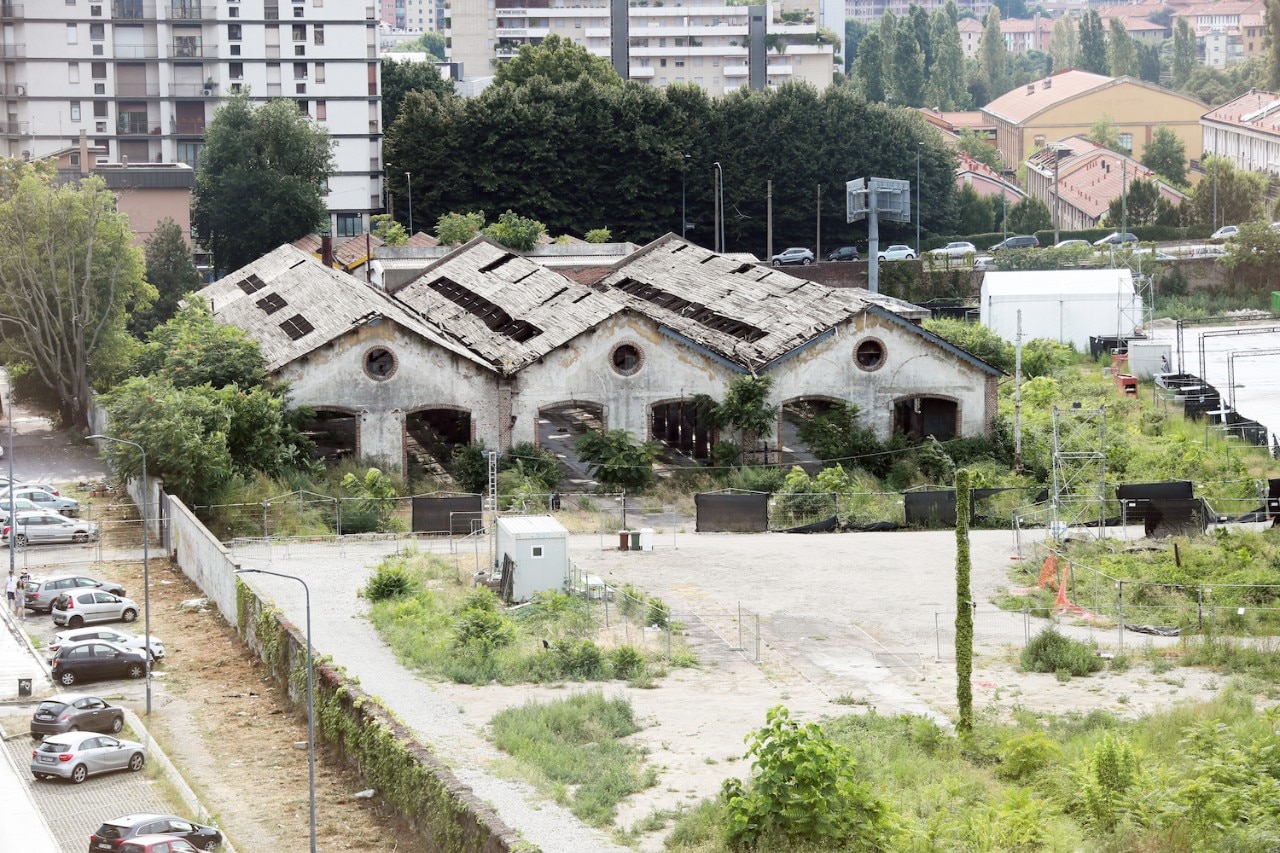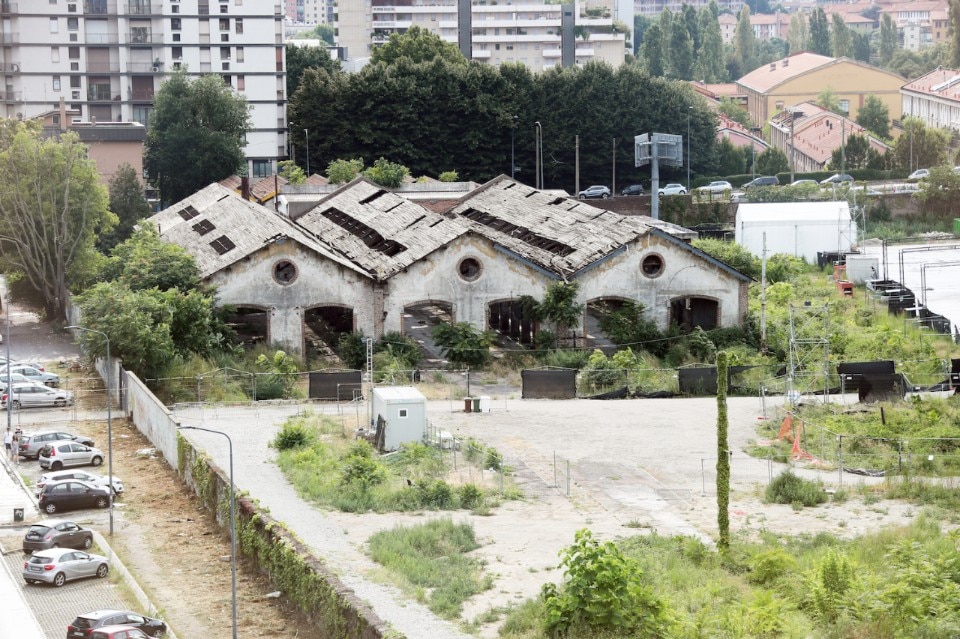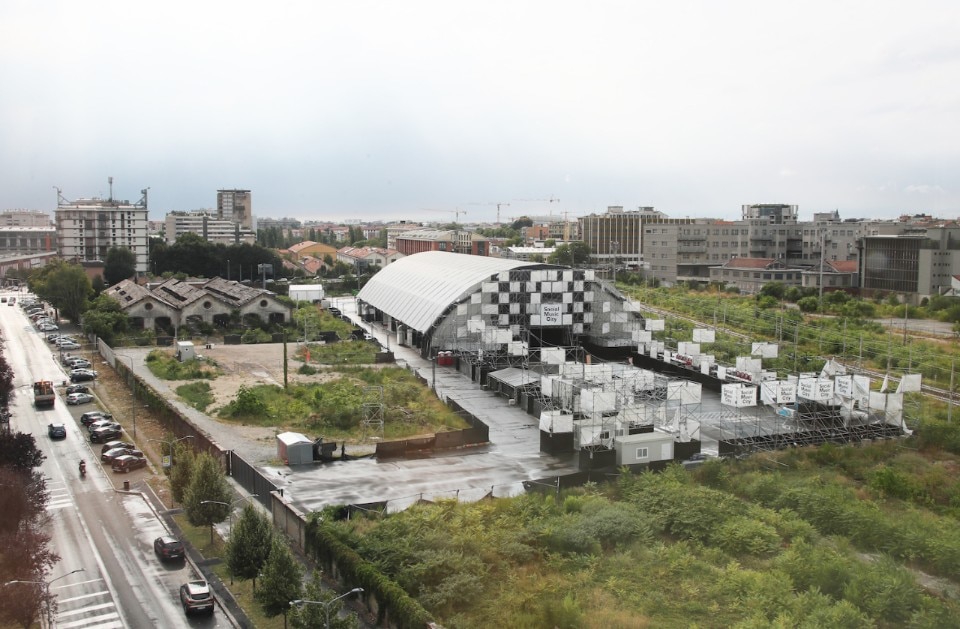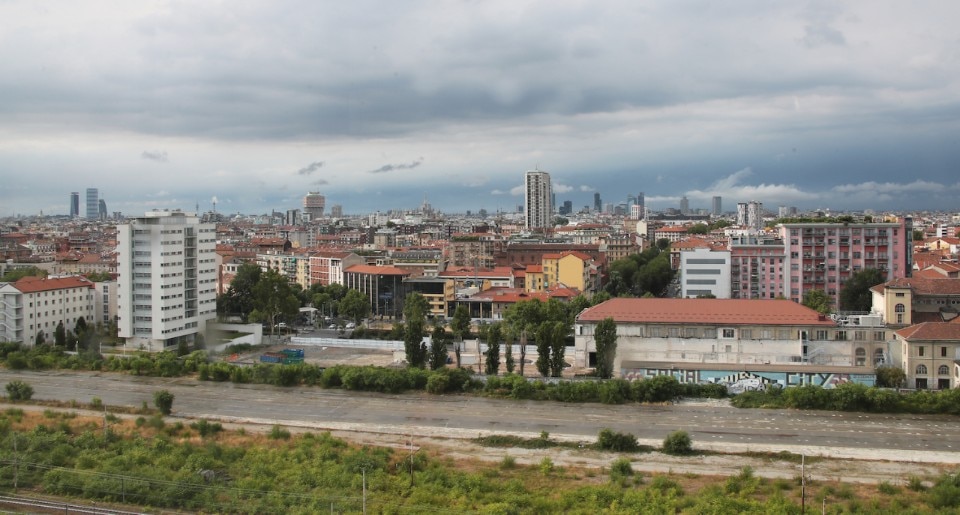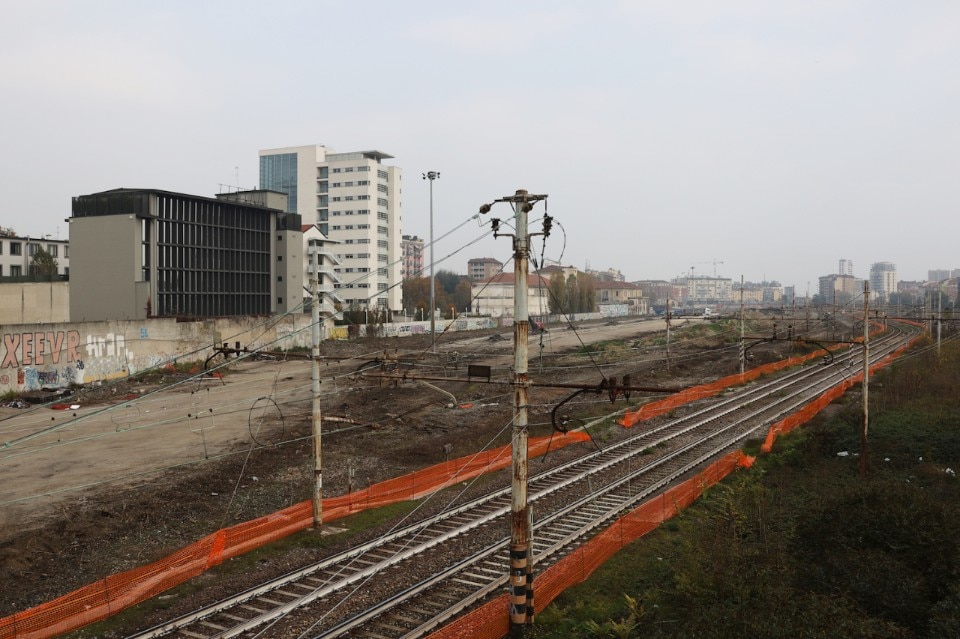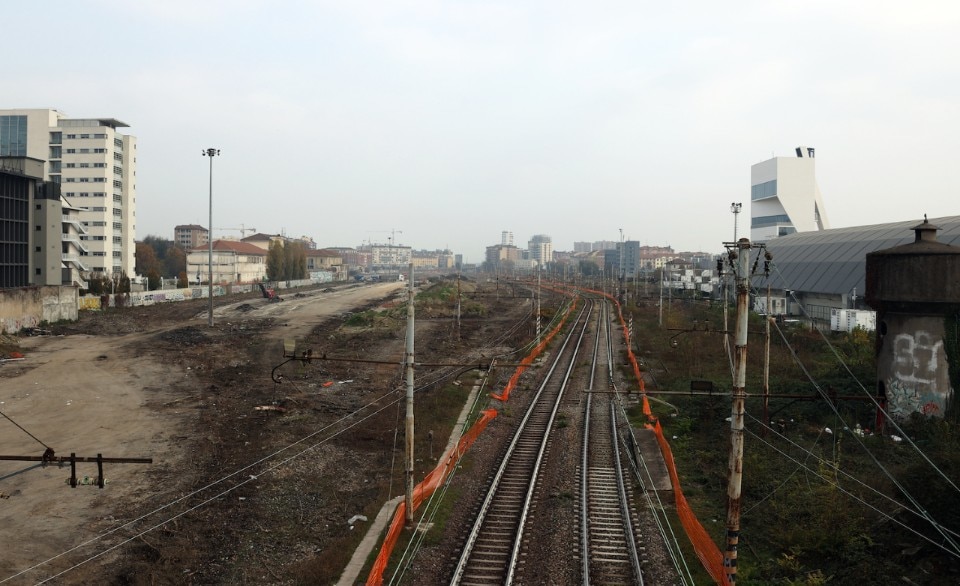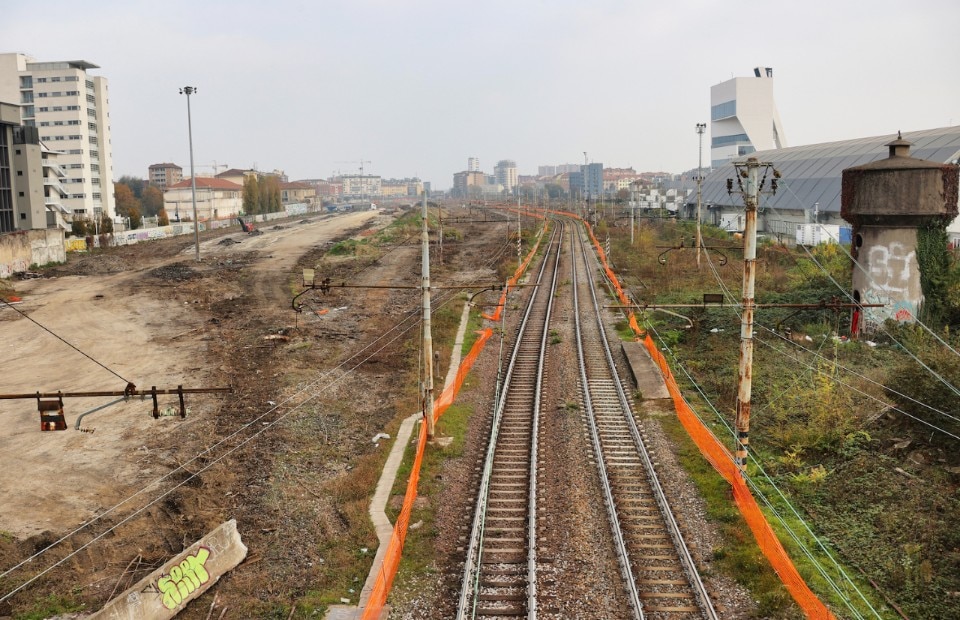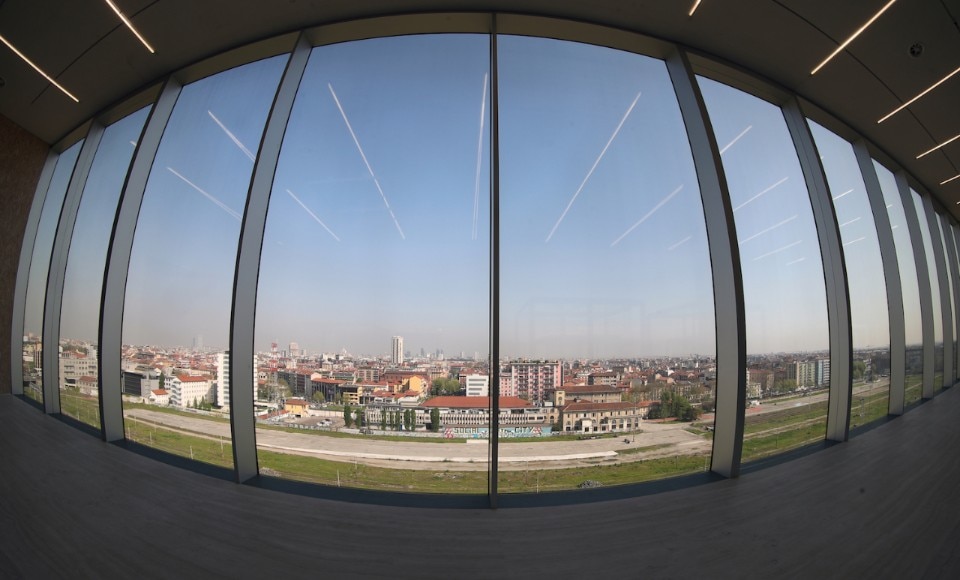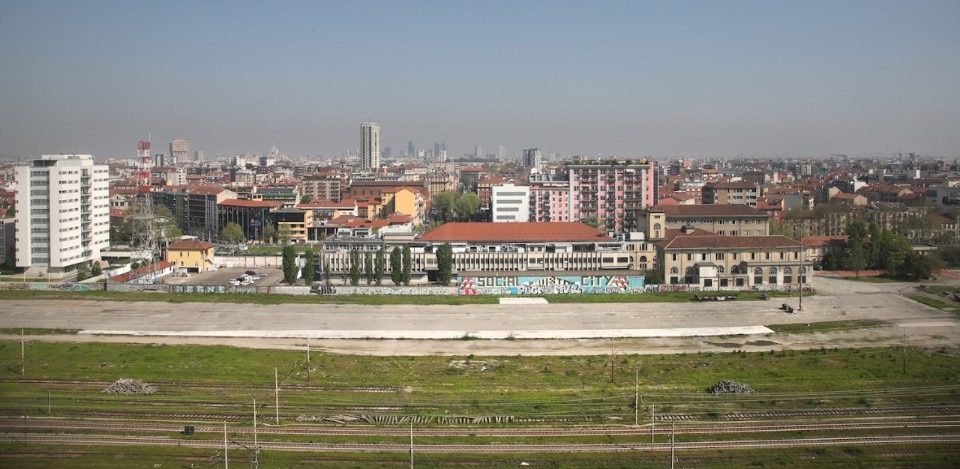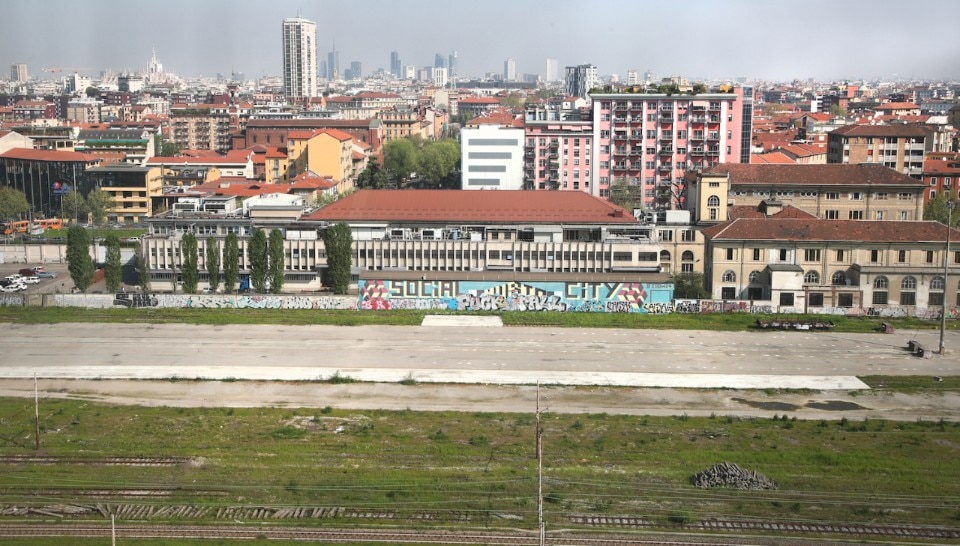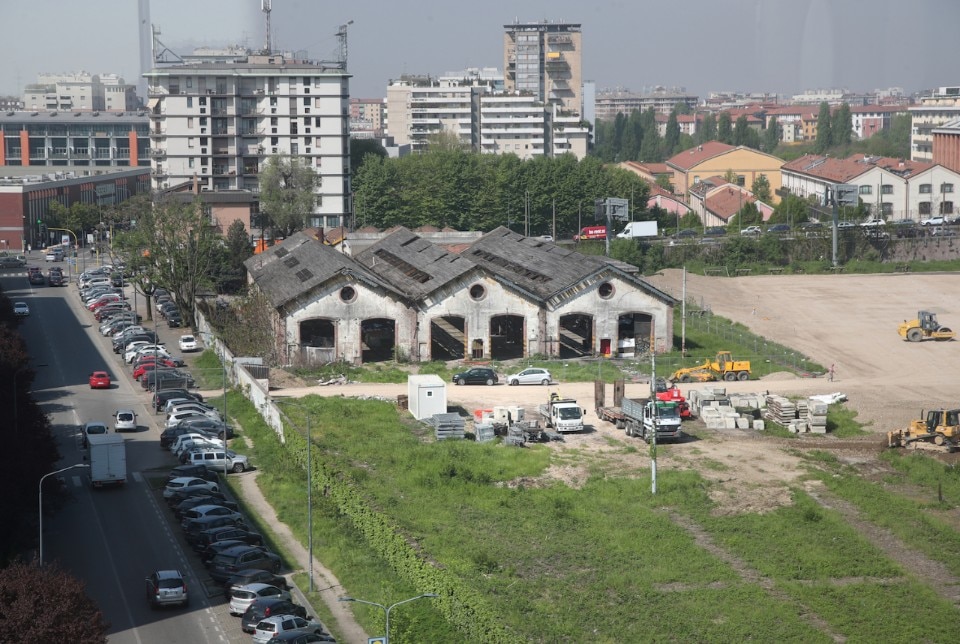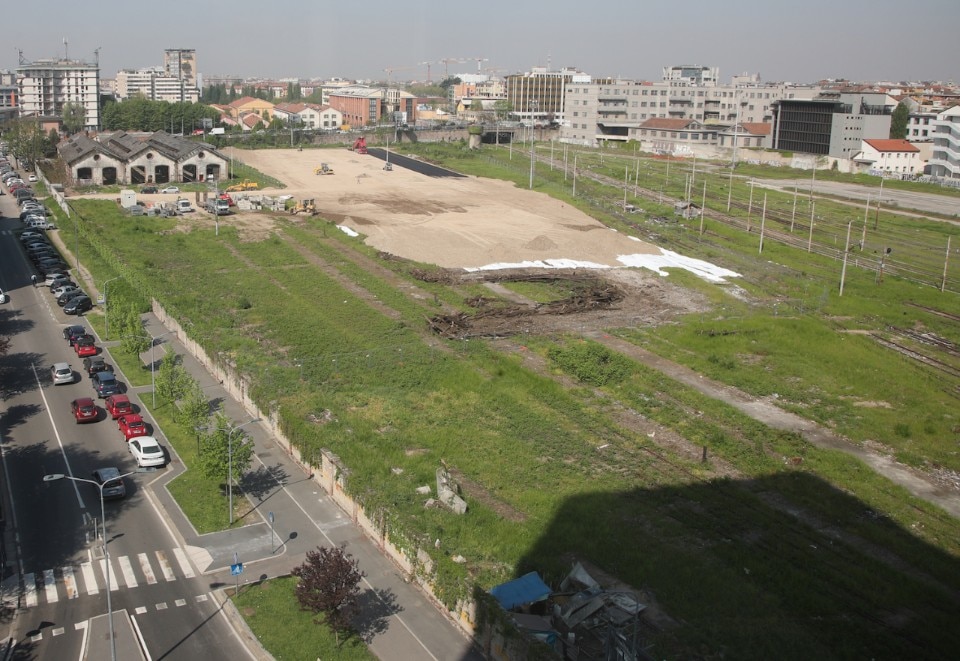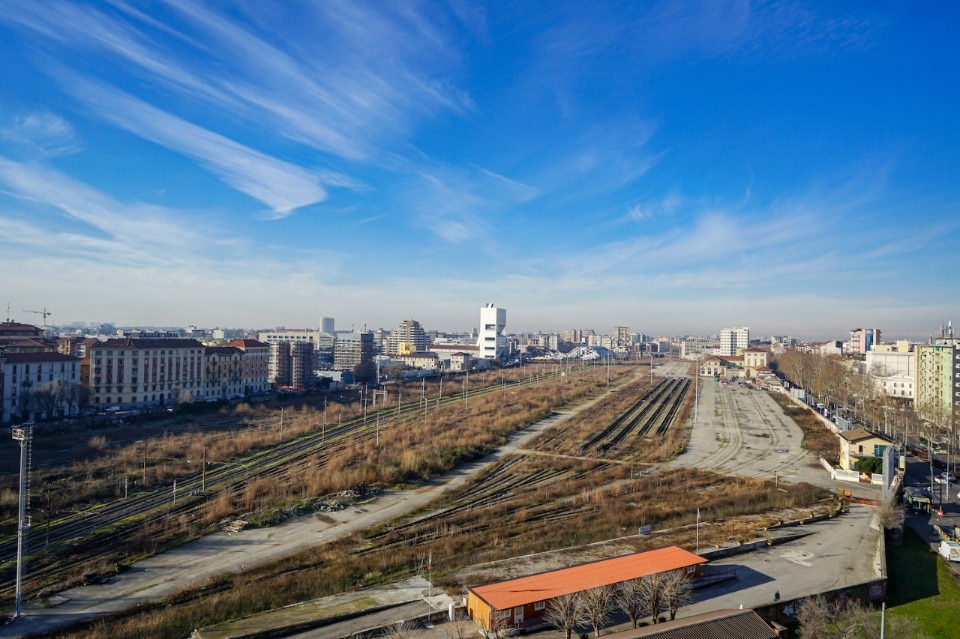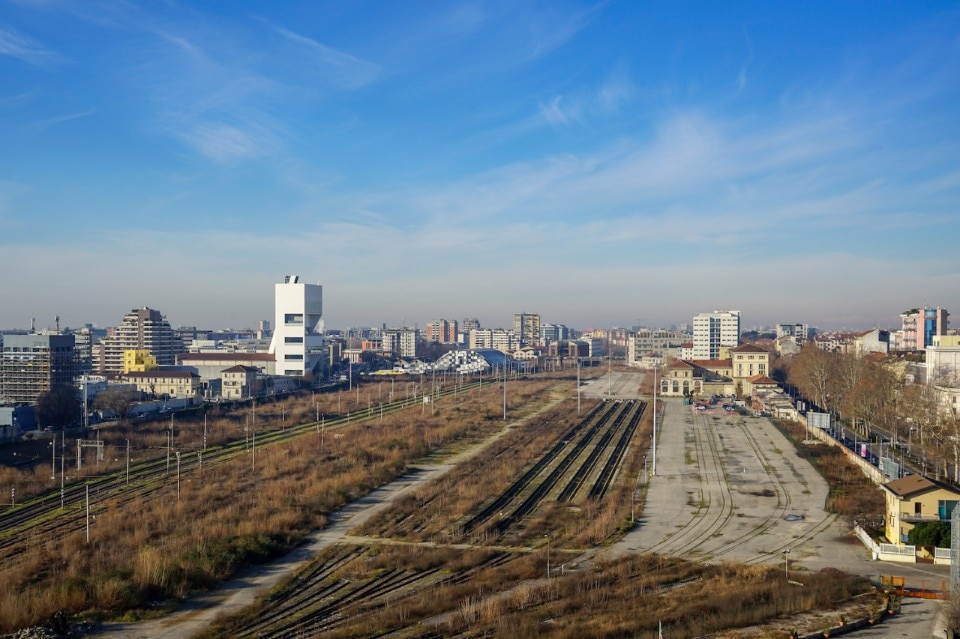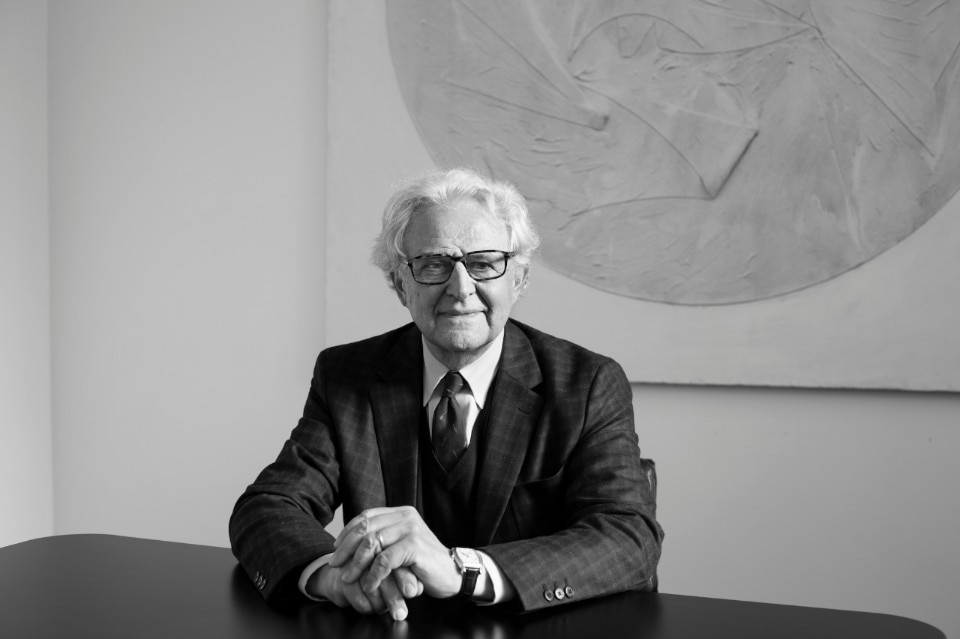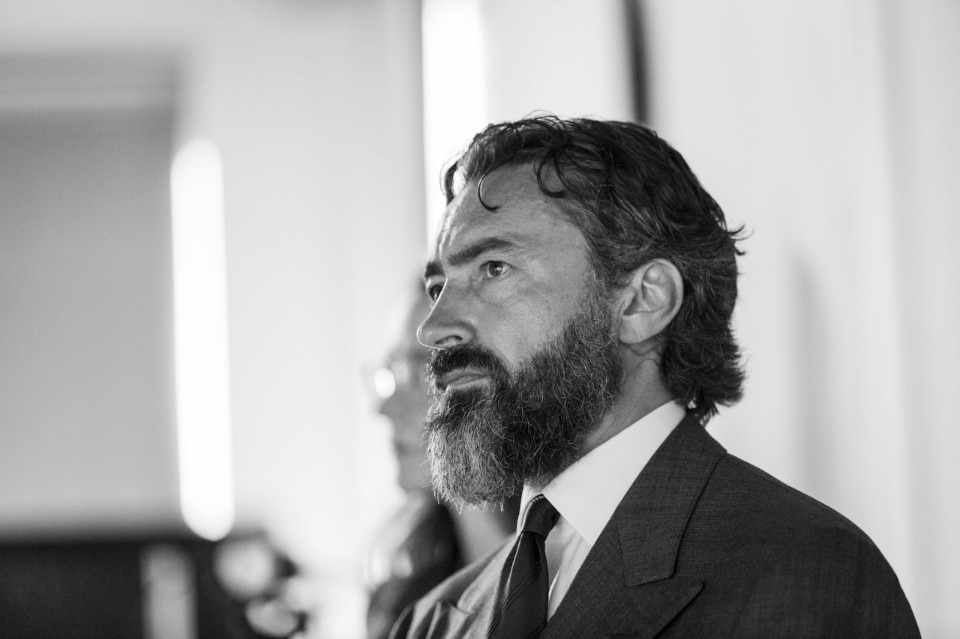During this group interview held by Domus, Carlo Mazzi, Director of Prada Holding Spa and Chairman of Prada Spa, and Manfredi Catella, CEO of Coima – the real estate company that has re-shaped Milan through projects such as Porta Nuova and Bosco Verticale – shared their thoughts on the future of the Porta Romana railway yard in Milan. This peripheral and yet very central area currently dominated by the Rem Koolhas/OMA-designed Fondazione Prada will soon undergo a complete transformation. First, together with Cortina and other Northern Italian locations, it will host the Olympic village during the Olympic Winter Games, which will take place from 6 to 22 February 2026. Then, it will become the subject of another major urban and real estate transformation led by Prada Holding, Coima, and Covivio, the latter being a French real estate investment trust involved in the ownership of properties. As we wait for the competition for the preparation of the Masterplan to start (it will take place in the spring), we asked its protagonists to tell us their opinions on the district, Milan, and the future of cities.
May we speak of a Prada-designed district? (MG)
Carlo Mazzi, Prada: I think it’s wrong to talk about an entire district. At the very most, we could talk about a Prada-designed park, but the entire district is by Coima-Covivio. Prada aims to preserve this area, ensuring that it does not become the object of careless interventions. The idea is to unite the city that today is interrupted by a barrier – the railway yard. In order to improve the area and give a breath of fresh air to the surrounding neighborhoods, a few years ago we proposed to Ferrovie dello Stato to build a hill over the railway line since the line could not be buried, and our idea was well received.
Manfredi Catella, Coima: Most sectors are represented by companies that have been able to establish themselves through strong values. If we think about cars and we say 'Tesla', we all know what we are talking about. When talking about one of the most important sectors that surround us every day, what is the brand that immediately pops into our minds? Strangely, such an important sector doesn’t feature companies with brands that have equally strong values and reputational identities. Surely this has always been an ambition of ours. The problem is that in order to become a well-established brand, you have to create a lot of products and, while in other sectors this happens very quickly – just think of an iPhone – in our field it takes many years to do so.
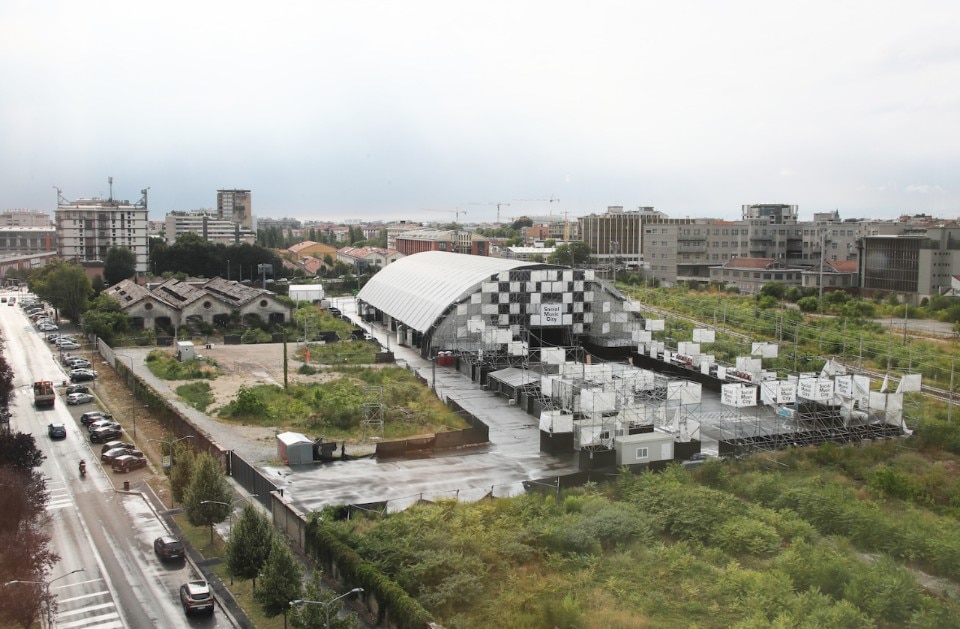
Is the developers’ lack of visibility due to the fact that the responsibility has been handed over to the architects? (WM)
M. Catella: In Italy, after the Second World War, we have experienced a period of reconstruction, where quantity prevailed over quality under the pretext of the crisis. This generated a progressive deterioration within the sector, which was not always quality-driven. Then, we have had the period of the surveyors, in which we witnessed a deterioration in those skills aimed at producing what was necessary. Then, the clients started handing over more and more responsibility to the architects – this is a serious mistake because the product has to come from the client, not the architect. Now we have to tidy up the supply chain to do things the right way.
Do you have a reference model for this new district? Will it be a Porta Nuova 2.0? (MG)
M. Catella: The Porta Romana railway yard must not have a definite reference model because each place has its own distinctive features, its own specificities. So, to think of putting a place on top of another place is always wrong. What we can do, is following a method. Dealing with real estate involves a great deal of responsibility, because whatever you do, whether it is a single building or a larger project, you will create something that will last for a long time and, by definition, will impact the community. This also applies to a private home that many people will see for many years, so it is a very non-private and very public act. When you think about it on a district scale, the responsibility is even greater.
What is the distinctive feature of this area?
M. Catella: Porta Romana is not an ordinary district, because it is located on the border between the historical centre and the suburbs. We all know the area – as you cross it, you will find an industrial area, housing projects, and then the Parco Sud. It really is a border, and for this reason, the project is complex, because it has to interpret two sides. When you design something in an old city centre, what surrounds you can condition or inspire you. Here, you need to be very gentle and sensitive as you stitch together the two edges of a city.
How will the masterplan be created? (MG)
M. Catella: The masterplan defines the functions and macro-forms, but it does not go into the detail of the architecture or at least it should not do it. When I think of a masterplan, I think of three dimensions. The first dimension is the invisible one, the second is the most intense, and the third is the private one. Under a district there are all the infrastructures that make it work. Now, the invisible part today is more complex than in the past because there is also the digital dimension. This means that today you have to think about those functions that you’ll have to implement in ten years, and it is not so easy when technology evolves so rapidly. We have to ask ourselves how we will move, how we will use physical spaces: it is not necessarily going to be like we do today.
Then, we have the most “intense” part of a masterplan, where the community exchange takes place, and where there is more interaction between people. It is the “ground floor” of a district, with parks and public areas, pedestrian areas, cultural functions, and services. This is normally somewhere between the grounds -1, 0, and +1, and it is a fundamental ground because it gives life to a district. Today it is even more necessary than in the past because, with the advent of e-commerce, shops and boutiques are disappearing. Last but not least we have the private dimension, the places where we sleep and work. This is more about the architecture of the building and not immediately the masterplan.
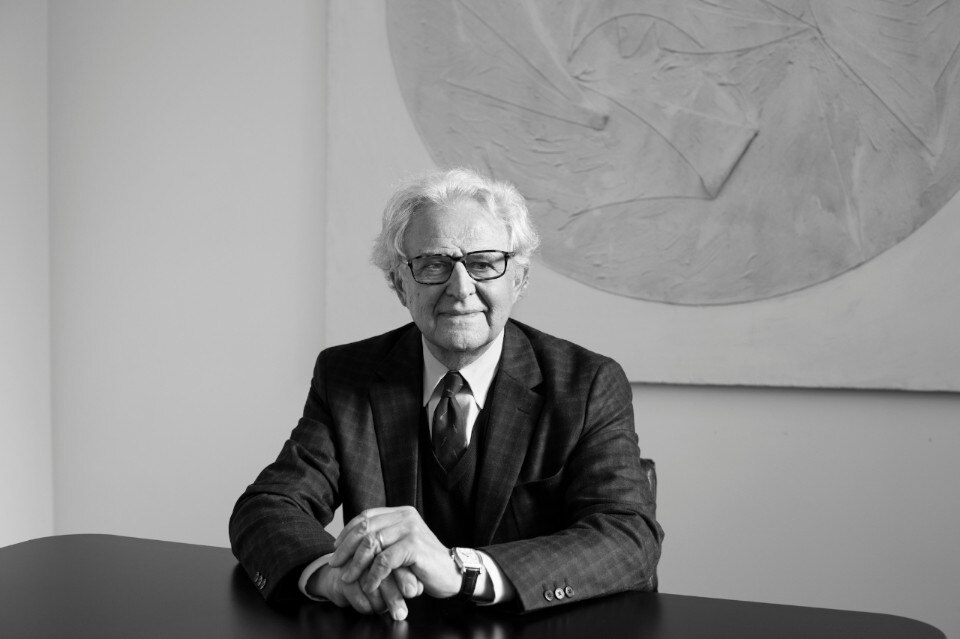
How will the competition be organized? What is the projected time-frame? (MG)
M. Catella: The auctioneer is represented by the grouping Prada, Covivio, and Coima. The competition will be private but also follow Article 8 of the building regulations, therefore it will have a public component. It will not be by invitation, and it will have two phases – first, there’s the validation phase with the expressions of interest, after which the jury – which is made up of 7 members, 4 of them being appointed by the auctioneer, 2 chosen by the auctioneer among the triplets proposed by the Order of Architects and the Order of Engineers and one chosen by the Municipality – will select who will participate in the second phase, which involves the actual design of the master plan. The model of this competition is very similar to the Farini railway yard, the only difference is that it is announced by the operator who will then develop it (i.e. Prada, Covivio and Coima): it is not a competition to obtain guidelines, but rather an industrial project.
The district will host the Olympic Village, whose delivery date is June 2025. Unfortunately, there have been long waiting times due to the pandemic: the winner of the competition should have been nominated over a year ago, so we are a year behind. Now the goal is to finish the competition by spring.
Cities are increasingly running the risk of becoming exclusive. Have you thought of some residential solutions that can make the area accessible to different people? (GR)
M. Catella: Certainly, in the sense that the district was born first of all on the impulse of the Program Agreement (an agreement between local authorities such as Regions, Provinces and Municipalities and other public administrations, editor’s note), then the Municipality and the Region have arranged a relevant part of social and convention building. Then Prada has an important presence in this area that goes even beyond the cultural function.
C. Mazzi: What can I say? I don't think like Margaret Thatcher who claimed that society doesn’t exist, that only people and at most families exist. We believe that the city is made by society. I believe and hope that we can make a district that is not a structure with a single function, but that it is a social neighborhood, that is, it is articulated in all the multiple social functions, so much so that we have the park there. A place of leisure and relaxation; then we will have offices, shops, houses. We will have social housing and student residences. We hope we will create a socially harmonious environment, like an orchestra composed of many different instruments playing together.
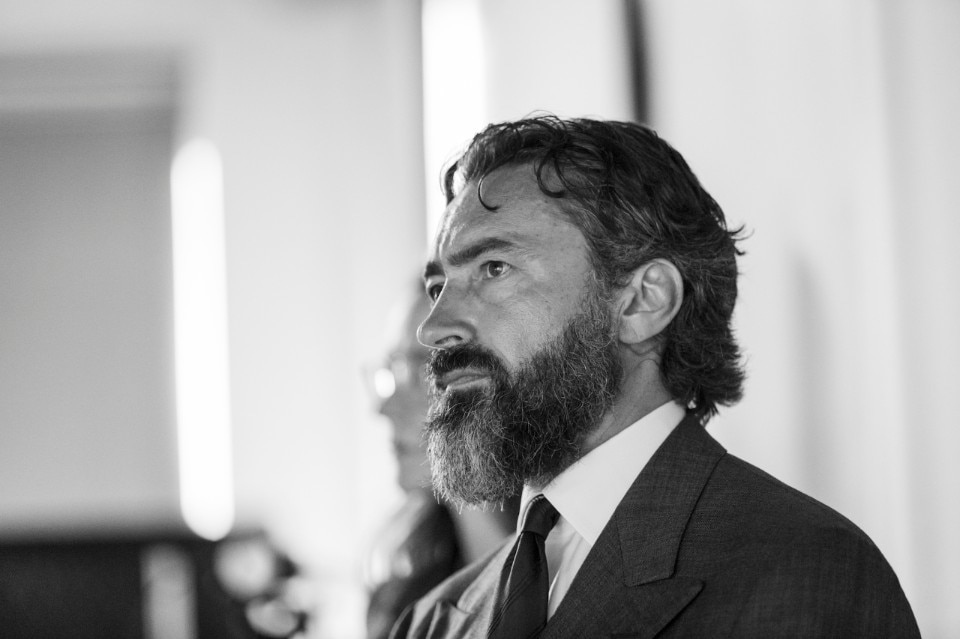
What does it mean to change the appearance of an entire district of Milan, as it happened with Fondazione Prada? Did you imagine it from the beginning? (MG)
C. Mazzi: We hoped things would get better, but I don’t feel like saying that we went there to change the southern area of Milan. We couldn't be so conceited as to think we were about to change the city. However, the idea behind moving the Fondazione to that district was inspired by the recovery of pre-existing structures, a practice that is very dear to Prada. There was the distillery Società Italiana Spiriti, with its industrial charm. The land with the dilapidated sheds behind the Fondazione was then given to Covivio to transform.
We think that position was very well chosen. We think that being there is stimulating because we want to experience the real city. Parts of the cities are often distorted. Via Montenapoleone is certainly a gem, but I personally miss the times when there was the greengrocer, the cobbler who made custom-made shoes and the delicatessen, but this is the affirmation of a man of the last century.
Is this interpretation of extended district a mechanism intended to avoid, at least on paper, gentrification? (WM)
M. Catella: I don’t want to horrify you, but I don't think gentrification in itself is wrong. What I mean is that cities, economies, societies evolve over time, they have different needs. If it had not been gentrified, via Montenapoleone would not be what it is, that is, an excellence in the world that everyone comes to see. Some areas become richer and less inclusive than others. When we made Porta Nuova, we had bought the areas of Garibaldi and Varesina, which had their own vocation. The intervention in Isola was more complex, because it is a neighbourhood that had very specific vocations. It was a work of mending and understanding the social matrix of that neighbourhood to enhance the characteristics that could survive and continue.
Since Expo, Milan has changed radically, from the Darsena to Porta Nuova. In the past, the city was more “functional”, while today values linked to the pleasantness of the relationship between man and nature seem to be consolidating. Is this a principle you are also pursuing in future projects for Milan? (GR)
C. Mazzi: at Prada, we are not real estate developers, but simple citizens, so we speak as users. It’s evident that this issue is universal. Nero was a great urban planner and he burnt down a whole section of the city to rebuild it more magnificently. He also tended to structure the city with qualitatively excellent forms, which however presented certain social problems. We have seen in the city – in the post-war period, but also before - the creation of ghettos, of suburbs that had a seriously negative effect on social relations. There are these two conflicting components: on the one hand, the need to improve the city and the city centres; on the other hand, the need to relegate societies to the suburbs and thus cause social struggles. We need town planners, we need architects, we need big real estate companies that have projects to reconcile quality, social relations and inclusion.
Today, we talk a lot about diversity and inclusion: even from the real estate point of view. Honestly, I am not capable of coming up with a solution. I remember with nostalgia some cities that I have visited, like Innsbruck, which over the years have become just like any other place.
M. Catella: If we look at the architecture of the ‘80s and ‘90s, it was very iconic and self-referential. The architect became a brand, until he became an archistar. And then this trend gave its worst in countries like China or the Middle East, where we see a collection of buildings by SOM, Kohn Pedersen Fox, Foster and others that look all the same. That is the physical representation of an economy strongly inspired by America, and an American-style capitalism, which, like all things, had good things and bad things. Meritocracy and innovation were positive, but personal profit based on wealth was absolutely negative.
Today, there is a profound cultural change that does not stem from the fact that we have become nicer or better, but from the fact that this extreme capitalist model has generated world problems called environment and poverty, for example. These are very accelerated issues that must be tackled now.
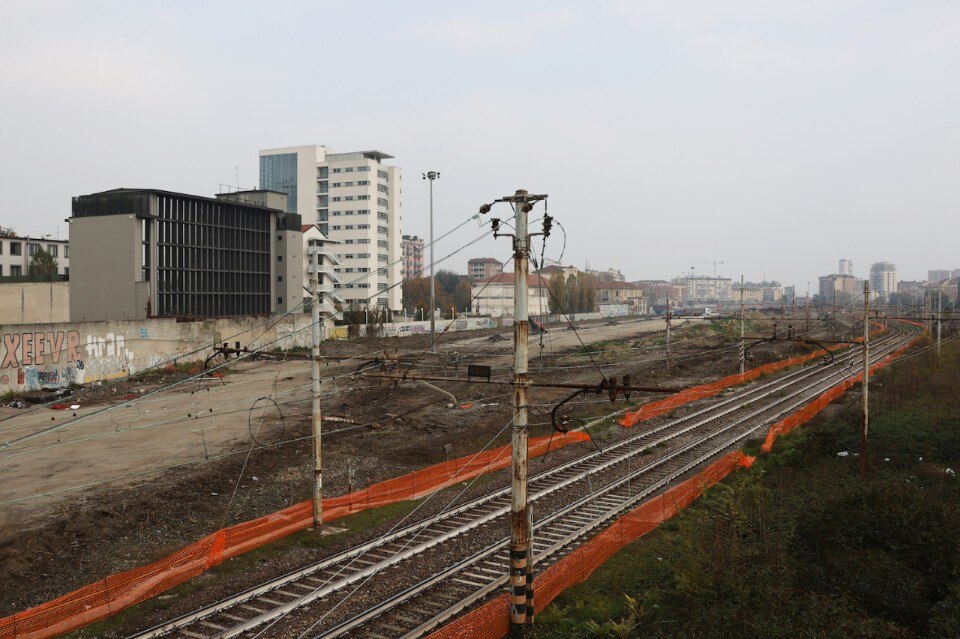
What is the future of cities? (GR)
M. Catella: The idea that the bigger the cities the better, is the result of that capitalist model that I never quite liked, because I don't believe in unlimited growth in general. Today, you can see it in all the discussions about the little towns in Italy, conceptually it is the search for a simpler and perhaps more accessible and more liveable quality of life: this is perhaps the point on which we need to reflect on when we design cities. With Renzo, Piano we talked about how cities should be contained and have an identified dimension, and then put them in quick connection with each other. In Italy, you can reach Turin from Milan in 40 minutes: what's the difference with the districts in London, where the distances are the same? There may be a new model of development, which our country can express because it is part of our history and is more relevant than ever.
When talking about mending cities, Renzo Piano argued that the future of cities already exists. In Italy, apart from Milan and Rome, which are very different from each other, one might argue that maybe cities do not exist. Our model of city is of a predominantly hilly, if not mountainous area, where large settlements did not exist. If cities no longer grow and produce, then what will happen? (WM)
M. Catella: I don’t think it’s about cities, but rather more about the distribution of the economy. Cities will continue to grow. The opportunity that we have here in Italy compared to other countries is a much more accessible fabric because our country is small, but we have lots of cities. If you put them in a system, if you connect them, then it's as if they were neighbourhoods, something that you can't do in other places. It is a model that we can develop, but the real structural problem in Italy is demography: if we found a territorial model, we could certainly be an attractive destination for many people, who could come and live here and contribute to the economy. So, I am not saying to stop capitalism, it would be absurd. But let’s think about different models of growth that could be much greater than the ones we have now.
Coima, which was established almost 50 years ago in Zingonia, has witnessed a very important evolution in the real estate market. In the light of this paradigm shift from a cultural point of view, do you feel that the private individual is responsible for preserving and transmitting the values and housing conditions of cities that were once carried out by the public? Is there a conflict in this? Let’s take France for example, where the state once had more freedom – today, with less economic availability, it has found solutions such as the ZAC, zone d’aménagement concerté, to involve the private sector in the development of the city. How much public-private co-responsibility is there in the creation of a fairer city? (GR)
M. Catella: A company that deals with the territory must have a strong sense of responsibility as it deals with a common good and with projects that will affect the community for many years. In this sense, I believe that there can be a virtuous relationship between the public and private sectors if each side plays its role well. This is why we all need to update our organizations, both private and public, concerning new technical skills such as environmental, digital and social issues. This to successfully face a future that is offering us an extraordinary challenge – which could once again turn Italy into a new role model for the rest of the world, as it has been in many periods of our history.


